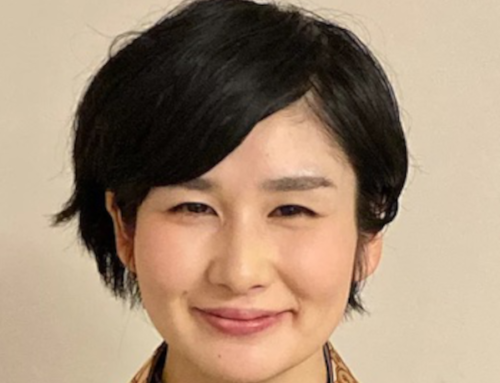“Kindness-Helping a small fish in a local pond”
In my life, as in other people’s lives, there have been a number of hours of work dedicated to small, normal, everyday things, like washing dishes, cleaning the bathroom, picking up after various cats, dogs and/or other pets, trying to keep up with what needs to be done, contemplating which light bulbs to buy that will work in the socket that I forgot to check.
Other things fall by the wayside because of the time taken on the aforesaid things. Sleep, swimming, planning the garden, sewing, looking up recipes to try new ones and shopping for and cooking what I just looked up. When I look at my life and decisions, it’s not always easy to understand why I made the decisions I did. Retrospection can cause considerable consternation, but it can also beget humor. Because I believe that looking at the humor in one’s life is definitely of benefit, I offer you this story.
Planting and growing produce was a way of life in White River, WA in 1980, as it was here in Silicon Valley. There was a dairy farm down the street from us which delivered fresh milk in glass bottles to our porch once a week. The bottles were picked up, sterilized and refilled to order. Blocks of cheese could also be ordered. “Thank you” vegetables were delivered by the crate to that same porch. On the temple property, there were huge rhododendron trees, camellia bushes and pussy willow. On her visits, my mother-in-law never failed to ask us to help her custom cut and tape cardboard boxes to pack up branches of various plants to ship back to Hawai‘i to use in her flower arrangements. It rained a lot in WA which made everything lovely and green. The view of Mt Rainier from the front window of the drafty little house in which we were so happy, was unbeatable.
I used to read a lot and decided, one day, that I should put my reading about the area to good use. Elanor had just been born, the weather was warming up, the time was right for planting. I carefully dug up a portion of earth on the side of the house, carefully placed the large, whole fish that I had reserved for this project into the ground and covered it with some soil. As I was carefully patting said earth into a mound into which I carefully pushed the corn kernels, some of the men of the temple looked on, forming a semi-circle around the planting area. They commented, “Looks like you’re planting some corn.”
“Yes! I thought I’d try this!” I said. They smiled.
“Looked like you put a fish under there.”
“Yes! I read that that’s what the native tribes did and thought it was a good idea.” They nodded and smiled.
“Well, looks like it’ll rain, so you don’t have to give it too much water.”
“Okay! Thank you!” And I smiled and waved as they started to leave. It was nice to think that they supported my little efforts. After all, I had never tried to plant corn before and could use the support. What’s more, I knew that they knew what they were doing! I reminded myself that the corn had to pollinate itself, but this method and the frequent breezes and winds around the house would take care of that, I thought.
As the corn started growing, I wondered why it was doing what it was doing. Did corn always grow that way, I thought to myself as I washed dishes while looking out the kitchen window.
Elanor and the corn grew quickly. There wasn’t a day when I wasn’t learning something new. Diapers were a daily chore as I had sewn cloth diapers, a ton of them, and washed and sterilized them at home which caused some reminiscing among the grandmas at the temple.
Before I knew it, the corn had grown tall and ears of corn were forming. The vision before me was not what I’d imagined. It would seem that I’d followed directions to the point that all other images of corn in the field were erased. I’d seen corn growing in fields through Iowa and Nebraska during our last Utsunomiya family trip driving cross country from California to Illinois with my grandparents in the back of our ‘57 Chevy station wagon. But my corn plants looked different.
My corn project, planted in a mound with a whole fish to nourish the stalks along, looked like a porcupine – or maybe a sea urchin. It did not look ‘normal’.
When I went outside to look at it again, some of the men, again, came to see how we were doing. I had Elanor over my shoulder, so they said ‘hi’ to her first, which she appreciated and so did I.
They very kindly remarked at how well the corn was growing. I stuttered a ‘Thank you’ and managed to ask them why the corn was growing so oddly. I had planted it per directions, in a mound. Had they ever seen corn planted that way?
They looked serious and shook their heads, no, they hadn’t. Then, one brave man, said, “Well you know, usually the mounds are long, probably because many rows of them are planted at the same time.” He smiled kindly and continued, “But this works too. I’ve just never seen them planted that way!”
“Gasp! Right! They are planted in long mounds, row after row, aren’t they! Oy Vey!” I was in shock, embarrassed and laughing at my goofy mistake! One of them took Elanor from me so that I could wipe away all the tears that were streaming down my face from my realization about my very obvious goof!
All that time, my husband (aka Rinban Sakamoto although he was Rev. Sakamoto at the time), all the kind women, all the children, all the people working on their farms or in their offices or homes – none of them pointed out my crazy lack of memory integration. They just went on thinking that the minister’s wife had some interesting ideas! Kansha shimasu!
Epilogue: The corn grew just fine. We harvested it and had home grown corn for a couple days.
Lesson: Even if you make things grow a bit differently than other people do, it doesn’t mean it’s wrong. And later in life, you might even receive a Commendation from the city you are living in for something completely unrelated, but still having to do with your special vision of the world.




